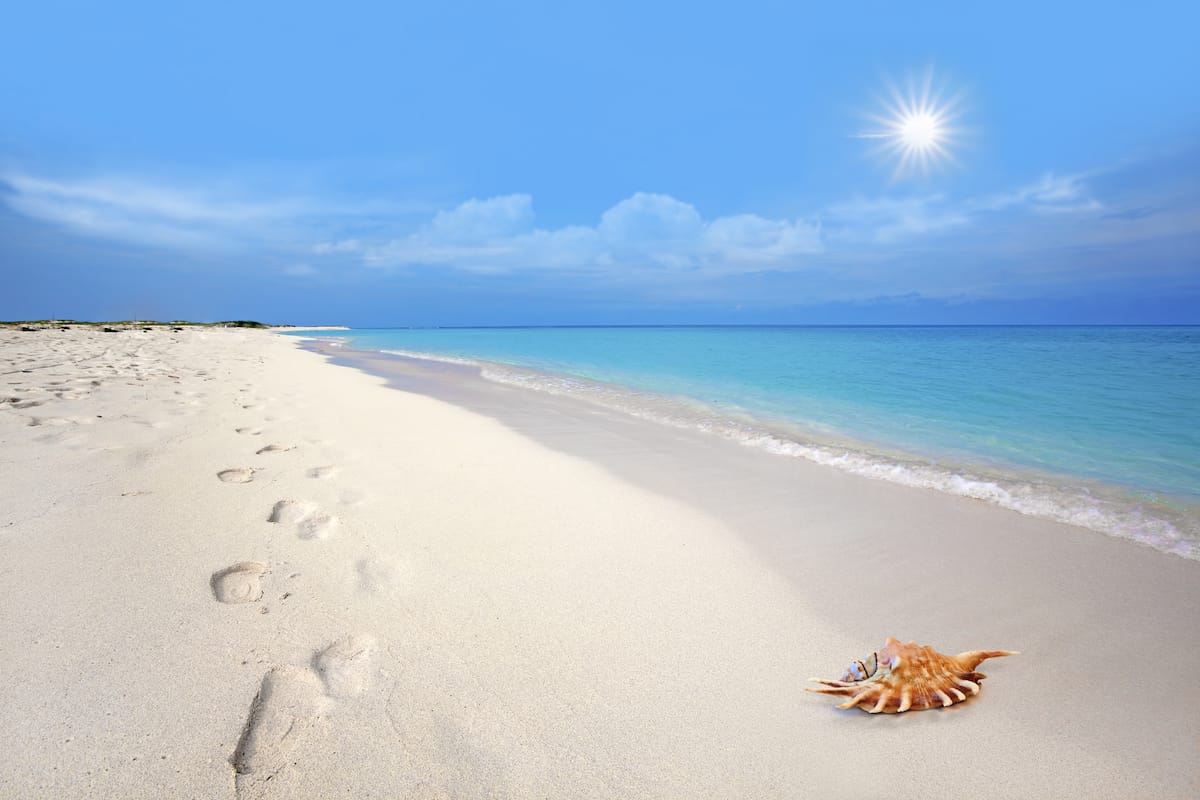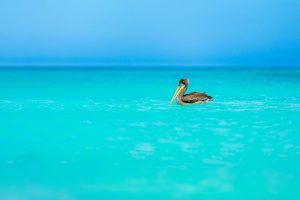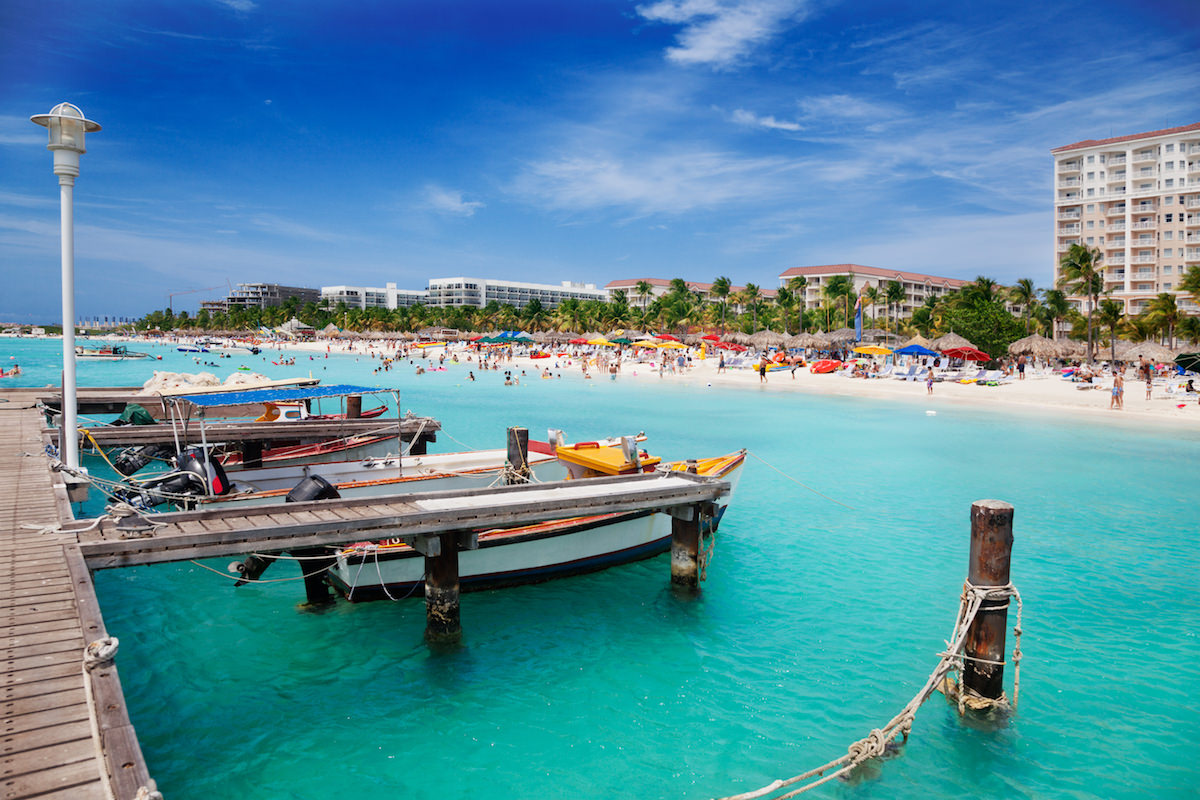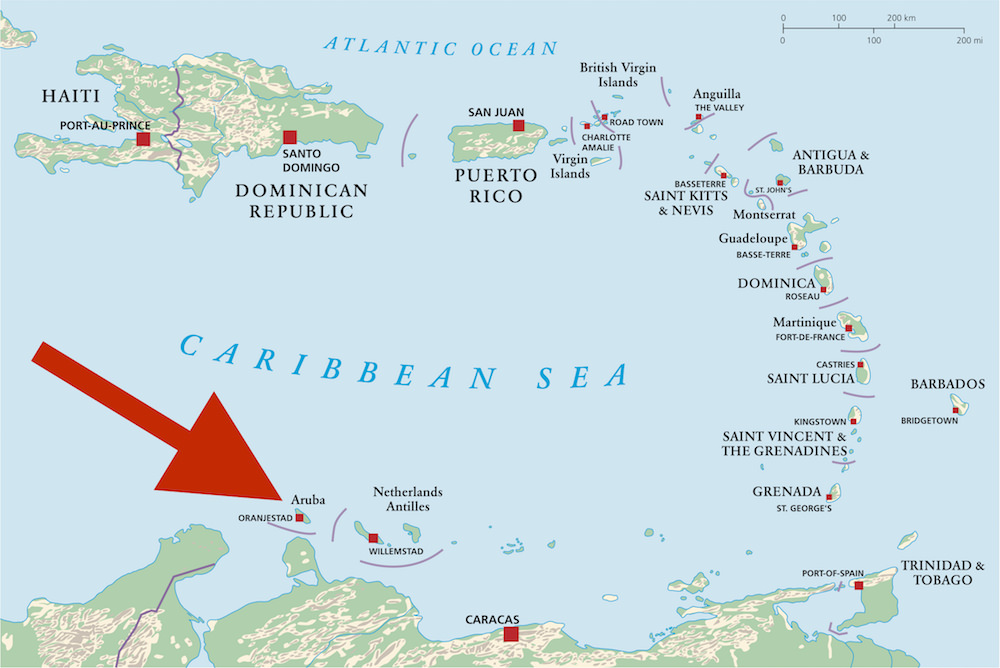Air Temperature

As the “one happy” Caribbean island is located a little over 12 degrees north of the equator, Aruba’s atmospheric conditions are classified as tropical with a fairly constant temperature of 82 sunny degrees Fahrenheit (28 degrees Celsius) year round. Temperature differences between day and night and summer and winter are a mere 38 degrees Fahrenheit (4 degrees Celsius). As a result, it is fair to say that the people of Aruba enjoy world-class weather thanks to comfortable average temperatures. On most days, a weather forecast is hardly needed. Visiting Aruba during the winter months is indeed a pleasurable thing to do. And that’s what people do in November, December, and January every year!
Water Temperature
| Month | Celsius (°C) | Fahrenheit (°F) |
|---|---|---|
| January | 26 | 79 |
| February | 26 | 79 |
| March | 26 | 79 |
| April | 27 | 80 |
| May | 27 | 81 |
| June | 28 | 82 |
| July | 27 | 81 |
| August | 28 | 82 |
| September | 29 | 83 |
| October | 29 | 84 |
| November | 28 | 83 |
| December | 27 | 81 |
| Year | 27.3 | 81.2 |
The water temperature in Aruba varies slightly throughout the year, but it is generally warm and comfortable for swimming and other water activities. Temperatures are generally comparable to a heated indoor pool.
The average water temperature in Aruba is around 80-85°F (27-29°C) throughout the year, with the warmest temperatures occurring in the summer months (May to October). During these months, the water temperature can reach up to around 87°F (30°C) or higher.
The water temperature is influenced by several factors, including the island’s location in the Caribbean Sea, its distance from the equator, and the prevalence of trade winds. The water temperature in Aruba is generally warmer than in other parts of the Caribbean.
Sunshine

Aruba experiences about 250 to 300 sunny days annually. This means that the island enjoys a high percentage of sunny weather compared to many other destinations. The consistent sunshine and pleasant climate make Aruba a popular choice for beach lovers and outdoor enthusiasts.
On average, the sun rises between 6 and 7 AM and sets between 6 and 7 in the evening year-round. Sunlight is very strong on Aruba, especially between the hours of 10.30 AM and 2:00 PM. Sunrays don’t just come from above, they are reflected by the typical white sands of Aruba’s beaches and the water surface of the Caribbean Sea.
As we explain in our list of Aruba Tanning Tips, frequent use of high-SPF sunscreens is strongly recommended, especially for people with lighter skin. Tourists who have just arrived in Aruba are strongly advised to avoid direct exposure to sunlight for the first few days. Don’t worry, even in the shade, you will get tanned!
Wind
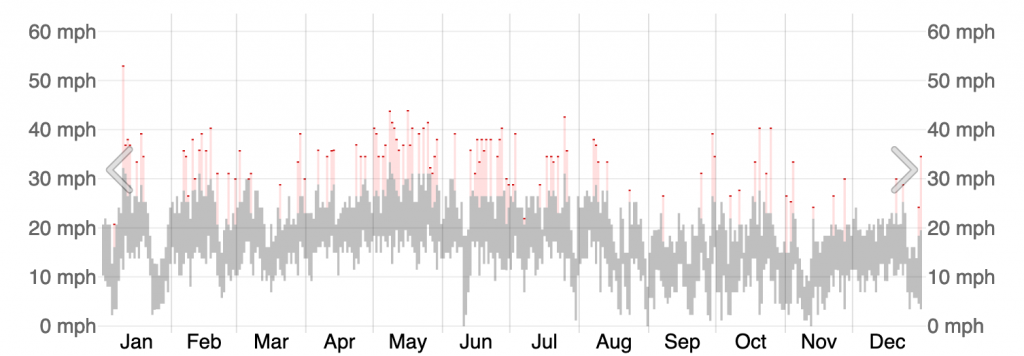
Trade winds make the meteorological conditions one of the most temperate ones on the islands in the Caribbean. During the year, wind speeds vary from 7 mph to 25 mph (light breeze to strong breeze) and almost never exceed 28 mph (strong breeze).
Every year in June, the winds are on average the highest at 25 mph (strong breeze) and in November the lowest at 18 mph (fresh breeze). Although Aruba’s trade winds make the temperature more tolerable, they will easily trick you into getting seriously sunburned, even on days with overcast skies.
The prevailing wind in Aruba blows from the east. This consistent easterly wind, known as the trade winds, is one of the reasons why Aruba is a popular destination for windsurfing and kitesurfing. The wind direction also contributes to the pleasant climate by providing a cooling effect and reducing humidity.
Aruba experiences strong winds primarily due to its location within the region of the Caribbean known as the “Trade Wind Belt.” Winds are generated by the temperature differences between the warm air near the equator and the cooler air at higher latitudes. Also, Aruba is a relatively flat island with minimal vegetation and no significant mountain ranges. This allows the trade winds to flow freely across the island, without many obstacles or disruptions. Temperature differences between the warm ocean waters and the landmass can intensify the trade winds.
Cloud Cover

Cloud cover can vary greatly from day to day and from one location to another. In general, the cloud cover in Aruba tends to be relatively low, with an average of about 30% of the sky being covered by clouds throughout the year.
The island generally experiences sunny and dry weather, with relatively low humidity and few clouds. However, during the rainy season (October to January), the island can experience more frequent cloud cover and rainfall.
Rainfall
Aruba’s weather brings an average rainfall of not more than 20 inches in an entire year. Chance of showers tends to increase during the months of October through January, and most of the rainfall takes place mainly during the months of November and December.
Rain showers on Aruba are generally short and can be quite a pleasure when you happen to be swimming or snorkeling. If you’d like to avoid any rain altogether, the best time to go to Aruba is between February and September.
Flash Floods
Aruba is not at risk of river or coastal flooding. However, the island can experience flash floods, which occur when heavy rainfall causes water to accumulate quickly in low-lying areas or areas with poor drainage.
These flash floods can sometimes cause damage to roads, bridges, and other infrastructure, and can also pose a safety hazard to people and animals.
Hurricanes
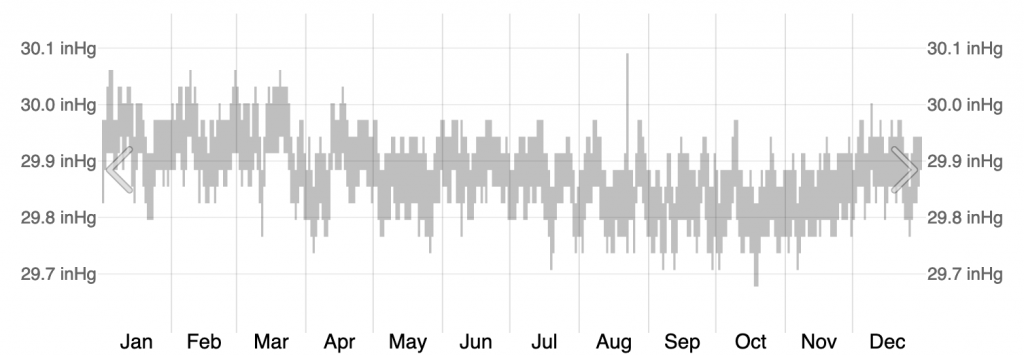
When is hurricane season in Aruba?
Although hurricanes do occur on occasion in the Caribbean region during hurricane season (The hurricane season in the Atlantic, Caribbean, and the Gulf of Mexico runs from June 1 to November 30 each year), a storm’s center rarely reaches Aruba. That’s because Aruba lies south of the hurricane belt.
The hurricane belt in the Caribbean is generally located between the western coast of Africa and the eastern coast of Central America, and extends northward to include parts of the southeastern United States.
The island – on occasion – is influenced by the fringe effects of tropical storms in the area, causing dangerous swimming and surfing conditions at worst. When this occurs, it is advised to closely keep an eye on local news and the Aruba weather service.
At the hotels, resorts or other types of accommodation, further info and instructions on what to do will be at hand when the Aruba weather conditions get serious. During tropical storms or hurricanes that reach Aruba too closely, it is difficult to forecast the atmospheric conditions and thus rely on it.
Be safe when it occurs!
Graphs provided by WeatherSpark
